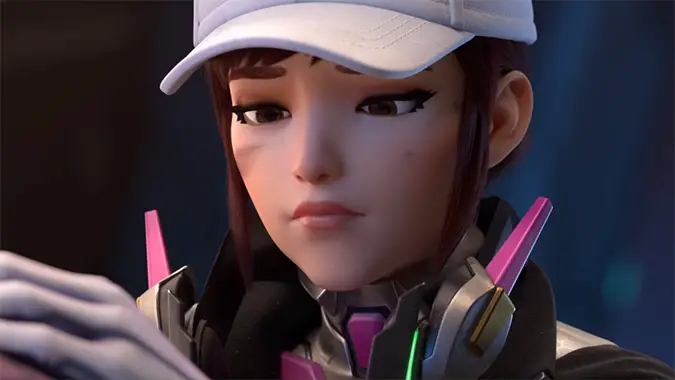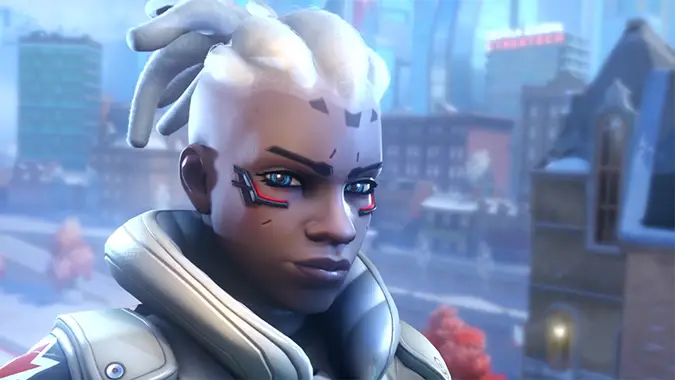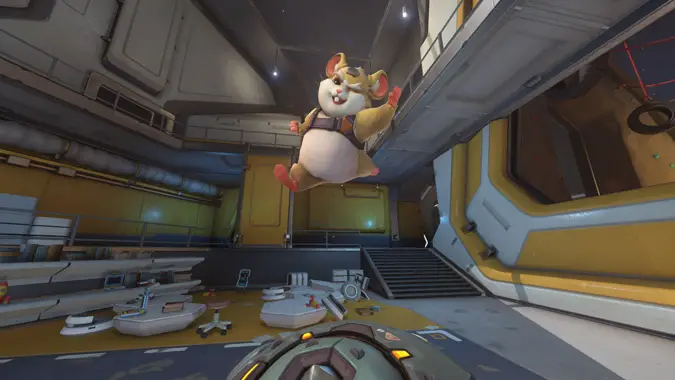Overwatch’s balance changes continue to double down on the game we never wanted

Whenever we talk about Overwatch patch notes or metas, there’s another way to look at these mechanical tweaks. It’s easy to forget that the game is made by a team of people at Blizzard that have specific ideas on how their game should work and what it should make you feel. This is why you you see Game Director Jeff Kaplan on a stage or on a Developer Update video talking about hero fantasy, capturing the mood of a particular part of the world through art, and the benefits of playing with your friends. Overwatch is a game where, yes, you shoot each other, but it’s also a game that speaks through its mechanics and visuals about how it sees the world and the competitive genre it’s in.
This has always been a troubling lens for Overwatch. The game has consistently dabbled in racist caricatures and tropes, and wholly inaccurate and ridiculous depictions of real world countries, people, and mental health problems. And that’s nothing to say of its players, professional and casual alike. The game depicts a hopeful future that will only include a black woman if the story is right, while also proudly justifying its existing two anthropomorphic animal heroes. It’s a cowardly game like any other from a billion dollar company; afraid of the inherent politics of making art in 2019, afraid of pandering to diversity.
The fear of challenging a specific section of its audience — the people so quick to assure you it’s just a game, bro — extends to the act of playing the game itself. Overwatch has cannibalized the parts of itself that differentiated it from every other shooter. The trinity of Tank, Support, and Damage has been warped into what looks more like a solo affair. If it’s not new heroes that can essentially do all three roles themselves, it’s massive nerfs to the existing heroes that prevent that too much for the small percentage of professionally-skilled players that don’t like it this week.

Overwatch is a game that launched with a hero that had the ability to undo traditional-shooter-style moments where a single player clutches out several kills in one swoop. Now, Mercy can resurrect one person at a time, every 30 seconds, with extreme vulnerability. She wasn’t letting the mechanically skilled players have their spotlight, and that had to be stopped. Blizzard agreed — or perhaps succumbed — and gutted her kit, along with any other hero that combated mechanically complex actions (i.e., aim) with mechanically simple ones. The game was too challenging for the people that don’t want to think that hard about their games. It’s just a shooter, bro.
Overwatch League at least made Blizzard honest. Whenever a balance patch hit the game that emphasized damage dealing heroes and abilities over protective or supportive ones, it was a clear response to the billion dollar hardship of its esports league. It’s much easier for casual fans to understand what’s going on in a pro game if they can watch a Widowmaker headshot three enemies in a row. For players, it’s much easier to practice something you’re already good at. When Overwatch dies out, at least that aim will be marketable elsewhere. Until then, if a bullet-eating hero like D.Va is denying them their potential stage bonus pay, she needs to go.
And it only trickles down from there. These players populate the Top 500 skill rating of the game’s Competitive mode and most appear in front of thousands of players on Twitch. Their view of the game, limited by their slice of the SR spectrum, pours into the mouths of the thousands of Redditors and Discord arguers willing to regurgitate it. Suddenly everyone of all skill levels is screaming about #DeleteBrig, stun meta, shield meta, and being stuck in Moira’s Nail Jail, despite nobody ever understanding the incredibly limited context in which these terms came from.
Nobody asks this tiny section of elite players whether this game — which includes lots of potential strengths where other playstyles can shine — isn’t for them anymore. They ask them how to better make it for them, and Blizzard responds to their whims every PTR patch. Metas aren’t born by an ingenious combination of player knowledge and experimentation curated by the direction of the game designers, they’re born out of the conservatism and tradition that these players bring to the game.
When viewed through this lens, when we get a patch that effectively turns the game’s last blockade against traditional, skill-based play, the evolution of the game starts to make sense.

In the latest PTR patch, barriers from Reinhardt, Sigma, and Orisa have had their strength reduced so far as to resemble short, cooldown abilities rather than static protection. Orisa’s barrier can be destroyed from four seconds of a Roadhog shooting it (not counting his other five teammates), leaving her and the team she’s supposed to protect wide open for damage. At the same time, she herself will have more health and the ability to move around faster while she’s shooting. Reinhardt and Sigma are the same way: trading massive shield health for mobility and survivability. Blizzard wants tanks to protect themselves — and maybe an ally or two — briefly, and then get into the fray and grab some kills like everyone else. At this point, it’s worth asking why the Tank category is there. Why not up their damage numbers and make them resemble the tank-ier heroes in a game like Apex Legends? Why burden Tank players with the suggestion of protection and team-play, when you really want them to kill first and think later like everyone else?
These changes happen because the audience that Blizzard is courting has shifted. There was a time in Overwatch’s history when healing was buffed to keep damage dealers in check. Now, they only get sanded down until smooth enough for the Top 500 player to never notice. Overwatch is now a game that wants certain players — and only those players — to have fun. For everyone else, you can play Mystery Heroes, or wait for Overwatch 2‘s PVE modes. If you’re looking for the tactical highs of 2016’s Overwatch, where counter-play and counter-picks were rewarded more than a single hero popping off, you’re back to playing single-player games and MMOs until someone is brave enough to make a game like that again.
Overwatch is no longer a game that seeks to ask more of its players, to challenge an industry and a genre to do more and to be better. It’s a game that caved to an audience that wants its games to have a specific point of view and a specific familiarity. It’s not for the people who never play shooters or even video games, even though that kind of accessibility was a core selling point at the outset. Almost everything that made it unique has been erased, neglected or ignored, while leaving the tragic remnants of something more. When we look back at all the problems the game has had — both culturally and mechanically — they start to look less like mishaps and more like evidence.
Please consider supporting our Patreon!
Join the Discussion
Blizzard Watch is a safe space for all readers. By leaving comments on this site you agree to follow our commenting and community guidelines.
 @tylercolp
@tylercolp



